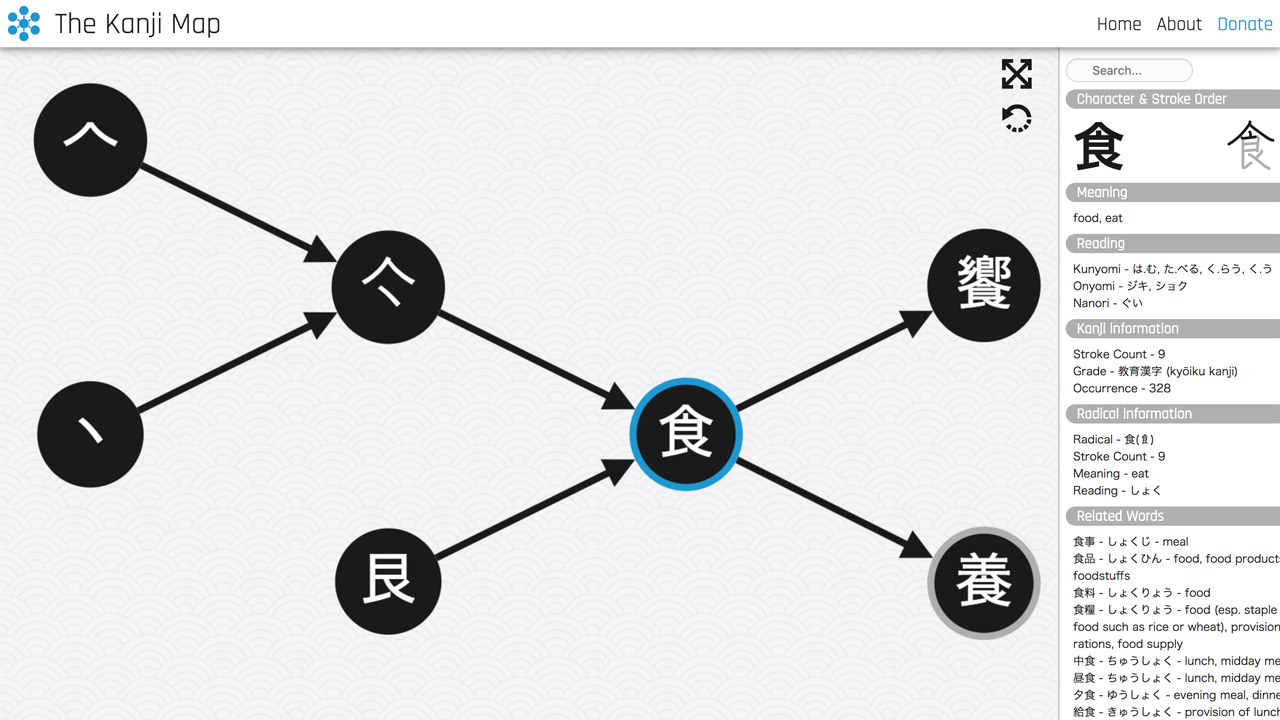
Remember how we just said reading is one of the most important Japanese language skills? Well, reading relies on kanji, and kanji skill is pretty difficult to acquire.
We've got a few ideas on how to learn kanji effectively, and one of them is to make connections between new information you acquire. That's why we're particularly excited about this site, The Kanji Map by Gabor Kovacs. Its sole purpose is to help you see connections between kanji.
The Kanji Map is exactly what it sounds like: a graph that highlights a particular kanji then maps it to nodes showcasing the individual radicals that make it up. Click on the radical and you get all the kanji that use that radical mapped out in another graph. Click on another kanji to see more radicals, leading to more kanji, and on and on.
To the right of the kanji map, you get a sidebar loaded with information: animated stroke order, stroke count, meaning, reading, radical information, and a list of related words.
Click on the radical and you get all the kanji that use that radical mapped out in another graph. Click on another kanji to see more radicals, leading to more kanji, and on and on.
You could find kanji by perusing the map (and you're meant to), but you can also use the search box to find a specific kanji you interested in. But you have to type the exact kanji you're looking for. No hiragana, romaji, or English. If you're not sure how to install a Japanese keyboard and type in Japanese, check out our guide.
The Kanji Map is an information dump, but it's an information dump that helps you explore kanji, make connections, and process information. There's a lot of potential here if you can think of interesting ways to use the program.